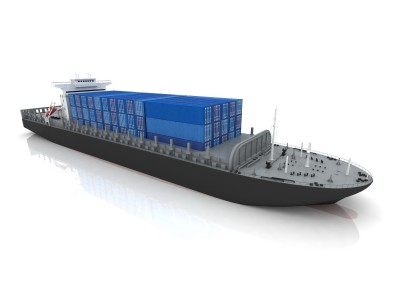<p style="text-align: justify;">The shipping container architecture is an accepted form of architecture which makes use of steel-intermodal containers or shipping containers as structural element, because of their innate strength, wide availability and relatively low expense. Used containers are generally similar to shipping containers. To sum up their architectural structure, let’s take a look at the advantages and disadvantages—these are what makes up used containers.</p>
<p style="text-align: justify;"><img class="aligncenter size-full wp-image-6236" alt="12230773_s" src="https://medusamagazine.com/wp-content/uploads/2013/08/12230773_s.jpg" width="400" height="300" /></p>
<h2 style="text-align: justify;"><b>Its Advantages</b></h2>
<h3 style="text-align: justify;"><strong>1. Strength And Durability</strong></h3>
<p style="text-align: justify;">Shipping containers ideal building material because they are designed to carry heavy loads and be stacked in high columns. Aside from this, shipping containers are also designed to resist harsh environments such as on ocean-going vessels or sprayed with road salt while transported on roads. Their strength is what enables them to be useful for secure storage.</p>
<h3 style="text-align: justify;"><strong>2. Modular</strong></h3>
<p style="text-align: justify;">Because shipping containers are built with strength and durability, all shipping containers are made to standard measurements and as such they provide modular elements that can be combined into larger structures. Because of this, the design, planning and transport are simplified.</p>
<h3 style="text-align: justify;"><strong>3. Labor</strong></h3>
<p style="text-align: justify;">The welding and cutting of steel is considered to be specialized labor and can increase construction expenses, but, considering the cost, it is overall still lower than conventional construction.</p>
<h3 style="text-align: justify;"><strong>4. Transport</strong></h3>
<p style="text-align: justify;">Used containers can easily be transport by ship, truck or rail because they already match against the standard shipping sizes.</p>
<h3 style="text-align: justify;"><strong>5. Availability</strong></h3>
<p style="text-align: justify;">Used shipping containers are available across the globe. They can easily be found right at your fingertips.</p>
<h2 style="text-align: justify;"><strong>The Disadvantages</strong></h2>
<h3 style="text-align: justify;"><strong>1. Temperature</strong></h3>
<p style="text-align: justify;">Because used containers are made of steel, it is a fact that steel conducts heat very well; containers used for human tenancy in an environment with extreme temperature variations will normally have to be better insulated than most brick, block or wood structures.</p>
<h3 style="text-align: justify;"><strong>2. Humidity</strong></h3>
<p style="text-align: justify;">Rust will form unless the steel is well sealed and insulated.</p>
<h3 style="text-align: justify;"><strong>3. Construction Site</strong></h3>
<p style="text-align: justify;">The size and weight of the containers will require them to be placed by a crane or forklift whereas traditional brick, block and lumber construction materials can often be moved by hand, even to upper stories.</p>
<h3 style="text-align: justify;"><strong>4. Building Permits</strong></h3>
<p>Obtaining building permits may be difficult in some regions due to municipalities not having seen this type of application before.</p>
<h3 style="text-align: justify;"><strong>5. Cargo Spillages</strong></h3>
<p style="text-align: justify;">A used shipping container can carry a wide variety of cargo during its working life. Spillages or contamination may have occurred on the inside surfaces and will have to be cleaned before habitation. Ideally, all the internal surfaces should be abrasive blasted to bare metal, and re-painted with a nontoxic paint system.</p>
<h3 style="text-align: justify;"><strong>6. Solvents</strong></h3>
<p style="text-align: justify;">Solvents released from paint and sealants used in manufacture might be harmful and the harm that these solvents can cause is no joke.</p>
<h3 style="text-align: justify;"><strong>7. Damage</strong></h3>
<p style="text-align: justify;">While in service, used containers may be subject to damage caused by friction, handling collisions, and force of heavy loads overhead during ship transits. The companies will inspect containers and condemn them if cracked welds, twisted frames or pin holes are found, among other faults.</p>
<p style="text-align: justify;">So, in the eyes of an architect, this is how he weighs in the used container.</p>
<blockquote><p><em><strong>Author Bio</strong></em></p>
<div><em>Steve Chamley trades products from South America like footwear and bags. He supplies them unbranded to different shops in Australia and New Zealand.</em></div>
</blockquote>

An Architect’s Perspective: What Makes Up Used Containers?
